Discover the allure and sophistication of Popular Chinese Hairstyles, where tradition seamlessly intertwines with modern trends, creating a fascinating tapestry of hair artistry. In the heart of China’s rich cultural heritage lies a legacy of hairstyles that have evolved over centuries, reflecting the nation’s diverse history, beliefs, and societal values.
From the graceful allure of ancient buns to the chic precision of contemporary cuts, Chinese hairstyles have captivated the world with their beauty and symbolism.
In this exploration, we delve into the historical roots, modern interpretations, and cultural significance of popular Chinese hairstyles, celebrating the artful fusion of tradition and innovation.
Join us on a journey through time, where we unravel the secrets behind these captivating hairdos, understanding their symbolism, and embracing the diversity of styles that continue to inspire individuals worldwide.
Whether you’re a hairstyling enthusiast, a cultural aficionado, or someone seeking inspiration, prepare to be enchanted by the timeless elegance of Popular Chinese Hairstyles.
Historical Perspective

Chinese hairstyles have always been emblematic of culture, tradition, and social status. Through different eras, these hairstyles have reflected the values and aesthetics of their times, showcasing the rich tapestry of Chinese heritage. Let’s explore the evolution of popular Chinese hairstyles through the ages, tracing their journey from ancient roots to contemporary expressions.
Also Read: 15 Cute & Easy Bun Hairstyles to Try in 2023
1. Ancient China
- Traditional Buns and Ornaments: Ancient Chinese hairstyles often featured elaborate buns adorned with ornate hairpins and combs, symbolizing wealth and social standing.
- Youthful Styles: Unmarried women left their hair flowing freely, emphasizing youth and vitality, while married women styled their hair in more modest buns, signifying maturity and marital status.
2. Imperial Dynasties
- Tang Dynasty (618–907 AD): The Tang era saw a flourishing of art and culture, reflected in hairstyles. Women adorned their hair with intricate jewelry and floral arrangements, showcasing sophistication and grace.
- Ming and Qing Dynasties (1368–1912 AD): Elaborate hairstyles with multiple loops and braids became popular among women of noble families, signifying their status and creativity.
3. Early 20th Century
- Transition to Modern Styles: In the early 20th century, China experienced a wave of modernization. Women started adopting Western hairstyles, including short bobs and finger waves, symbolizing progress and cosmopolitanism.
- Impact of Cultural Movements: The 1911 Revolution and subsequent political and cultural movements influenced hairstyles, promoting simpler, more practical cuts to reflect the changing times.
4. Post-Revolution Era
- Maoist Era (1949–1976): During the Maoist era, there was a push for uniformity. Men and women alike adopted practical, short hairstyles, emphasizing equality and the rejection of bourgeois ideals.
- Revival of Traditional Styles: After the economic reforms of the late 20th century, there was a resurgence of interest in traditional Chinese culture. This led to a revival of classic hairstyles, blending ancient aesthetics with modern sensibilities.
5. Contemporary China
- Global Influences: Modern Chinese hairstyles are influenced by global trends. From sleek bobs and pixie cuts for women to textured cuts and undercuts for men, contemporary styles reflect a fusion of international fashion with traditional Chinese elements.
- Digital Age Influence: Social media and online platforms have allowed for the rapid exchange of hairstyle trends, enabling individuals to experiment with diverse styles and express their creativity.
Popular Chinese Hairstyles for Women
Chinese women have long been admired for their grace and beauty, with hairstyles playing a significant role in their overall allure. Here’s a closer look at some of the most adored hairstyles among Chinese women, blending tradition, elegance, and a touch of modern flair.
Guan (冠) Hairstyle

The Guan hairstyle, a cherished symbol of Chinese elegance, features a high, intricately woven bun atop the head. Reflecting nobility and grace, this traditional style has transcended centuries, becoming an emblem of sophistication. Adorned with ornate hairpins and delicate accessories, the Guan hairstyle signifies both heritage and femininity.
Its timeless appeal lies in its ability to capture the essence of ancient China while remaining a fashionable choice today. With its graceful twists and intricate details, the Guan hairstyle continues to enchant, embodying the enduring beauty of Chinese culture.
Ji (髻) Hairstyle

The Ji hairstyle, characterized by a rounded bun at the back of the head, epitomizes grace and femininity in Chinese culture. Originating from the Tang and Song dynasties, this style exudes a quiet sophistication that has stood the test of time. Its rounded form symbolizes harmony and balance, reflecting the traditional Chinese appreciation for natural beauty.
Often adorned with delicate accessories, the Ji hairstyle captures the essence of ancient China while maintaining its allure in the modern world. With its understated elegance, the Ji hairstyle remains a timeless choice, embodying the rich heritage of Chinese hairstyling.
Chin-Length Bob

The chic charm of the chin-length bob lies in its simplicity and versatility. With its precise cut ending gracefully at the chin, this hairstyle frames the face elegantly, highlighting features with subtle sophistication. Whether worn sleek and polished for formal events or tousled for a casual allure, the chin-length bob effortlessly blends style and ease.
Its popularity among Chinese women resonates from its ability to suit various occasions and face shapes. Embracing modernity while retaining a touch of classic allure, the chin-length bob has become a statement of contemporary elegance, defining a new era of hairstyling fashion.
Also Read: 13 Summer Haircuts to Flaunt in 2023
Sleek Long Hair
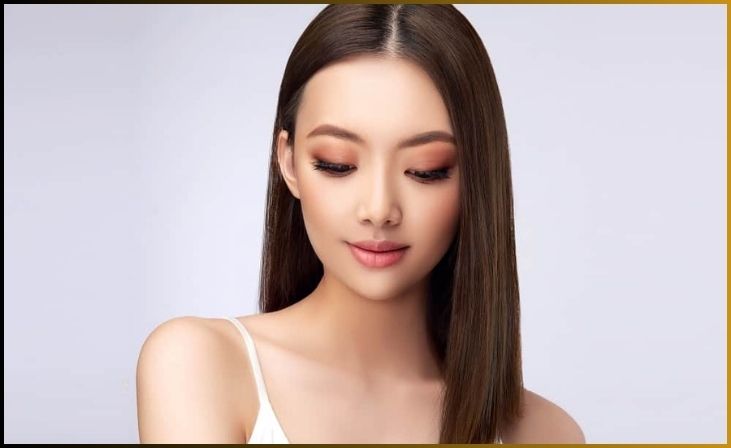
Sleek long hair embodies the epitome of timeless beauty in Chinese culture. Flowing gracefully, it exudes elegance and sophistication, symbolizing natural allure and femininity. This classic style, often worn straight and glossy, captures attention with its simplicity. Reflecting traditional ideals, it showcases the enduring charm of long, smooth locks.
Embraced by generations, this hairstyle represents grace and poise, effortlessly complementing various outfits and occasions. With its understated yet captivating appeal, sleek long hair continues to be a symbol of enduring femininity, resonating across cultures and standing the test of time.
K-Pop Inspired Styles

K-Pop-inspired hairstyles have captured the hearts of many, infusing Chinese fashion with a dose of youthful energy and creativity. Embracing the influence of Korean pop culture, these styles often feature playful elements like subtle waves, curtain bangs, and vibrant hues. The look effortlessly balances edgy glamour with a touch of elegance, allowing individuals to express their personality boldly.
Popular among the youth, K-Pop-inspired hairstyles redefine contemporary trends, adding a sense of adventure and individuality to the world of hairstyling. Whether it’s the charm of natural waves or the allure of unconventional colors, these styles reflect a dynamic fusion of cultures, making a bold fashion statement.
Popular Chinese Hairstyles for Men
Chinese men’s hairstyles have experienced a remarkable evolution, merging the elegance of tradition with the edginess of modern trends. Let’s explore the most popular Chinese hairstyles for men, where tradition meets cutting-edge style.
Long Hair and Topknots
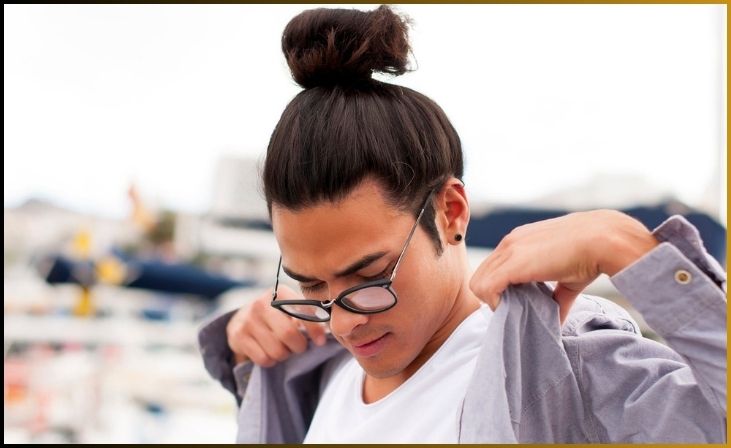
Long hair tied into a topknot, a historical emblem of strength and discipline, holds profound significance in Chinese culture. Originating from ancient warriors and scholars, this style symbolized authority and martial prowess. Today, this traditional hairstyle is making a resurgence, captivating modern men seeking a connection with their heritage.
The graceful cascade of long locks, elegantly secured atop the head, embodies both historical reverence and contemporary allure. Embracing the spirit of ancient warriors, men sporting long hair and topknots exude a unique blend of confidence and cultural pride, reviving the legacy of this timeless Chinese hairstyle.
Undercuts and Fades
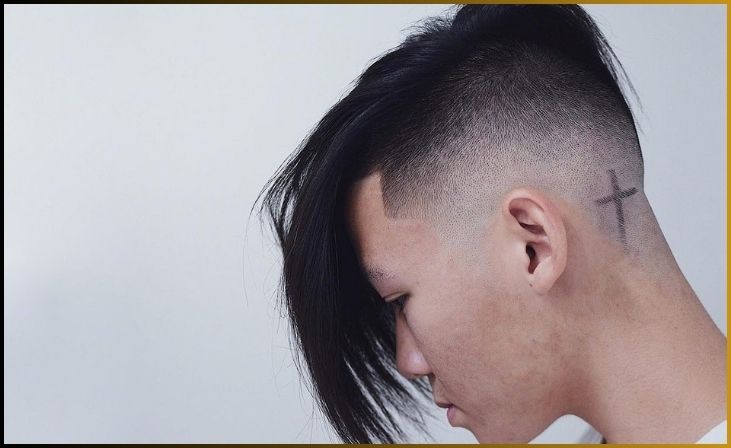
Undercut hairstyles, featuring shaved or closely trimmed sides that sharply contrast with longer hair on top, have become a hallmark of contemporary Chinese men’s fashion. Paired with fades, where hair gradually transitions from short to long, these styles offer a striking blend of modern sharpness and timeless sophistication.
This fusion captures the essence of ancient Chinese elegance while embracing the edginess of modernity. Undercuts and fades provide versatility, allowing men to express their personality while staying connected to tradition. This bold juxtaposition of lengths exemplifies the evolving nature of Chinese men’s hairstyles, symbolizing a harmonious union of heritage and cutting-edge style.
Braided Styles
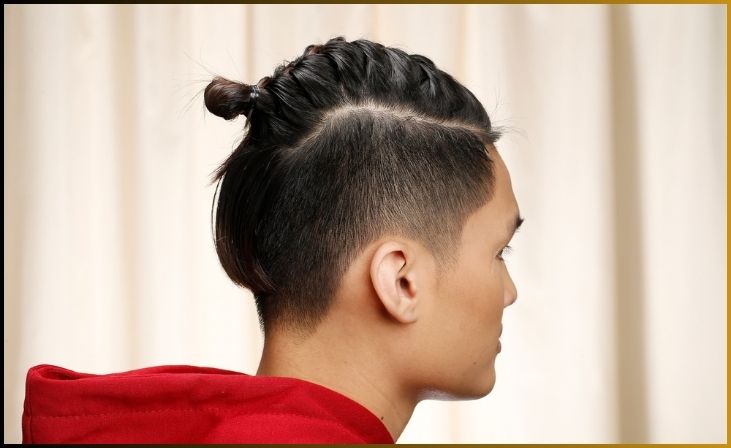
Braided hairstyles, deeply rooted in Chinese culture, have found a resurgence among modern men. These styles, often incorporating intricate braids with shaved or trimmed sides, represent a seamless blend of tradition and contemporary fashion. Inspired by ancient Chinese warriors and cultural motifs, braided styles showcase artistry and a connection to heritage.
From simple braided accents to elaborate designs, these hairstyles offer a unique canvas for self-expression. Beyond aesthetics, braided styles serve as a testament to the rich cultural tapestry, where history intertwines gracefully with contemporary trends, creating a captivating narrative of style and identity.
Textured Cuts

Textured cuts have become a hallmark of contemporary Chinese men’s hairstyles, embodying a fusion of laid-back charm and urban sophistication. Characterized by deliberate, tousled layers and a natural finish, these cuts exude a sense of effortless style. Embracing the art of imperfection, textured hairstyles offer versatility, allowing men to transition seamlessly from casual to formal settings.
The deliberate dishevelment not only adds depth and dimension but also captures the essence of modern masculinity. Textured cuts redefine conventional standards, symbolizing a bold departure from the norm and reflecting the dynamic spirit of today’s Chinese men.
Modern Man Buns
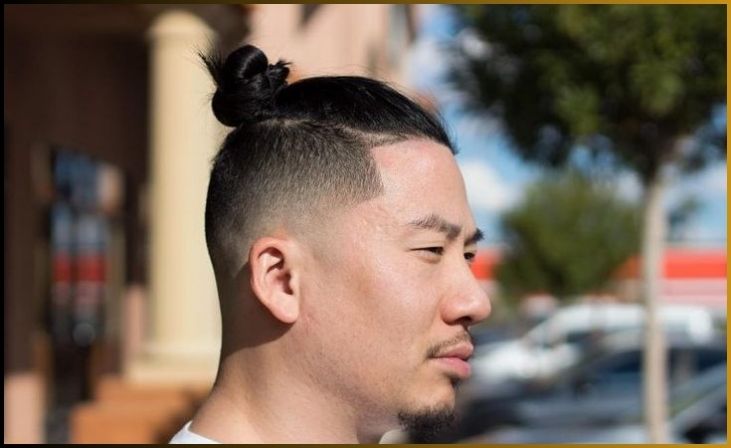
The modern man bun has emerged as a symbol of contemporary coolness and relaxed refinement among Chinese men. Characterized by a neatly tied bun at the back of the head, this style effortlessly balances a sense of effortlessness with a touch of sophistication.
Whether worn loose and relaxed or meticulously styled, the modern man bun complements various occasions, from casual outings to formal events. Its adaptability and ease of styling have made it a go-to choice, allowing men to exude both confidence and charm. This versatile hairstyle captures the essence of modern masculinity, redefining traditional norms with a refreshing twist.
Also Read: The 10 Best Hair Colors for Winter 2023
Conclusion
In the intricate weave of history and fashion, popular Chinese hairstyles stand as a testament to enduring elegance and cultural richness. From ancient traditions to modern innovations, these hairstyles reflect the dynamic spirit of China, embracing heritage while exploring contemporary trends. The legacy lives on, weaving a timeless tapestry where tradition and trend harmoniously coexist, celebrating the diverse beauty of Chinese hairstyling across ages.
FAQ
Chinese hairstyles have evolved from ancient buns and ornaments to modern bobs, pixie cuts, and textured styles. Influenced by dynasties, social changes, and global trends, they showcase a rich cultural journey.
Yes, traditional Chinese festivals and weddings often feature special hairstyles. Brides, for instance, might wear intricate braids or buns adorned with auspicious accessories to symbolize happiness and prosperity.
Absolutely! Skilled hairstylists can customize Chinese hairstyles based on face shape, hair texture, and personal preferences.

